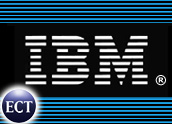
East Coast grocer Stop & Shop has introduced shopping carts that give consumers Internet accessibility at their fingertips.
The smart carts, from IBM and Cuesol of Quincy, Massachusetts, feature on-board IBM touchscreen computers that double as personal assistants when the laser scanner on the cart reads an individual shopper’s loyalty card. The card can call up the shopper’s homemade grocery list, e-mailed into the store’s database before her minivan ever left her driveway and linked to her through her loyalty card account. The scanner allows the cart-pusher to keep a running total of her purchases and loyalty program benefits as she moves through the supermarket.
The smart shopping cart will alert customers to promotions and personalized discounts on preferred brands as they walk the store aisles, too.
High-Tech Shopping
Controlled wirelessly through technologies such as RFID and global positioning systems (GPS), the smart cart also provides a store map to assist the customer in navigating aisles. In time, additional information on products and their nutritional values, for instance, may pop up on the screen as the customer scans items or enters an aisle of products she regularly buys.
By evaluating the consumer’s shopping history, the cart can suggest whether certain perishable foods in the refrigerator at home — eggs, milk or yogurt, for example — could be out of date and therefore need replacement.
The cart is even capable of wirelessly placing deli orders to be picked up en route to the checkout line.
The Stop & Shop Shopping Buddy, as the IBM/Cuesol Cart Companion is called by the supermarket company, aims to support efficient supply chain and inventory management while providing personalized attention and convenience that no other technology has delivered.
“Obviously the challenge right now for retailers is to be as efficient as possible, as streamlined as possible and understand who they’re selling to. The other side is to create a compelling consumer experience,” said Greg Thompson, a spokesman from IBM.
As consumers in the few pilot Stop & Shop locations use the Shopping Buddy, the grocer will get to see how long they spend in each aisle, which aisles they visit first. This data will help Stop & Shop lay out their stores in the future for optimum — and most profitable — use. It also will help store management determine shelf allocation and product placement with more accuracy than register receipts lend.
Costs and Profits
“These are the two court challenges all retailers are facing,” he continued. “How do we control costs and be as efficient as possible, getting the right items to the right stores, avoiding the stock-out problem but also not having items languishing on store shelves [in one location] when they might need the products on store shelves 80 miles away? And how can I create a consumer experience so compelling that my customer drives past my competitor to shop at my store?”
With in-cart technology, Stop & Shop also will be able to gauge the effectiveness of its in-store marketing efforts. These include the messages that show up on the IBM WebPads, end-aisle displays, audio messages delivered over the public address system, special signs and loyalty program perks.
Because shoppers will scan their loyalty cards to receive the best and most personalized offers, Stop & Shop could tie this marketing measurement back to individual customers to see what promotions or advertising works best on a one-to-one basis.
“That would be a great next step, adding [responsiveness] about in-store marketing to their frequent-shopper database so they know how to market to individuals in the future,” said Valerie Frost, vice president of retail markets for Harte-Hanks in Allenwood, New Jersey. “If they had that data, they might use the information collected by their loyalty program more. This may be the richness in data they need to capture the full idea of what’s going on with customers.”
Stop & Shop won’t be matching purchases to marketing messages, IBM’s Thompson said, however. It just wants to ensure that its card-carrying shoppers don’t stray to the supermarket down the street.
Wasted Opportunities
But Frost pointed out that grocery retailers do so much of their marketing in-store that they’ve let the direct mail potential in their frequent-shopper card programs lie dormant. The information in those databases hasn’t been rich enough to help improve in-store marketing. “This is potentially the missing piece needed to put frequent-shopper data into use,” she said.
This next move shouldn’t be approached hastily, though.
“One caution I would have in having people scan their cards [on the smart carts] is a full disclosure of the way stores are using the data,” Frost said.
“Consumers, even in the past five years, have become more amenable to the businesses they interact with collecting and using information about them, but they feel comfortable only when they know they aren’t being tricked,” he added.
She recommended that Stop & Shop increase the utility of the information it collects beyond supply chain management and customer retention to marketing measurement but require each first-time Shopping Buddy user to agree to allow Stop & Shop to note marketing influences on product purchases.



















































